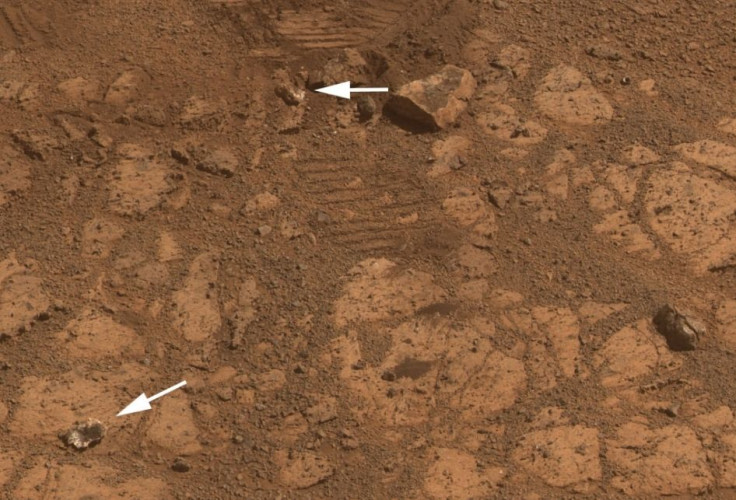Martian Rock, Resembling Jelly Doughnut, No More A Mystery: NASA

NASA said on Friday that it had solved the mystery of a Martian rock resembling a jelly donut, which appeared in an image captured by the space agency’s Mars Exploration Rover Opportunity in early January.
According to researchers at NASA, the donut-like rock, dubbed “Pinnacle Island,” was a piece of a larger rock broken and moved by the wheel of Opportunity. The rover took the image of the 1.5-inch-wide rock on Jan. 8 at a location on the red planet where it was not present four days earlier.
“Once we moved Opportunity a short distance, after inspecting Pinnacle Island, we could see directly uphill an overturned rock that has the same unusual appearance,” Ray Arvidson of Washington University in St. Louis and the deputy principal investigator with Opportunity, said in a statement. "We drove over it. We can see the track. That's where Pinnacle Island came from."
While examining white-rimmed and red-centered Pinnacle Island, the researchers found high levels of manganese and sulfur, suggesting that these water-soluble ingredients were concentrated in the rock by the action of water.
“This may have happened just beneath the surface relatively recently,” Arvidson said, “or it may have happened deeper below ground longer ago and then, by serendipity, erosion stripped away material above it and made it accessible to our wheels.”
NASA said that Opportunity had finished inspecting the rock, and that it is now ready to head south and uphill to investigate exposed rock layers on the slope. Opportunity's work on the north-facing slope below the escarpment is expected to give the rover an energy advantage by tilting its solar panels toward the winter sun.
“We are now past the minimum solar-energy point of this Martian winter,” John Callas, the project manager with Opportunity, said in the statement. “We now can expect to have more energy available each week. What's more, recent winds removed some dust from the rover's solar array. So we have higher performance from the array than the previous two winters.”
© Copyright IBTimes 2024. All rights reserved.












